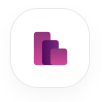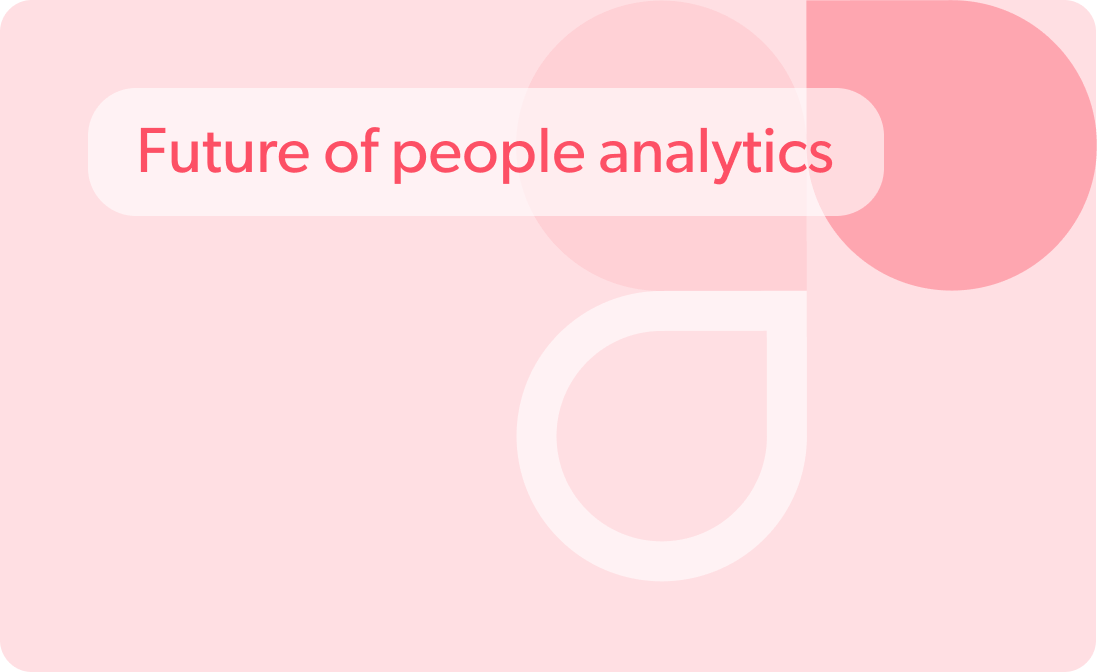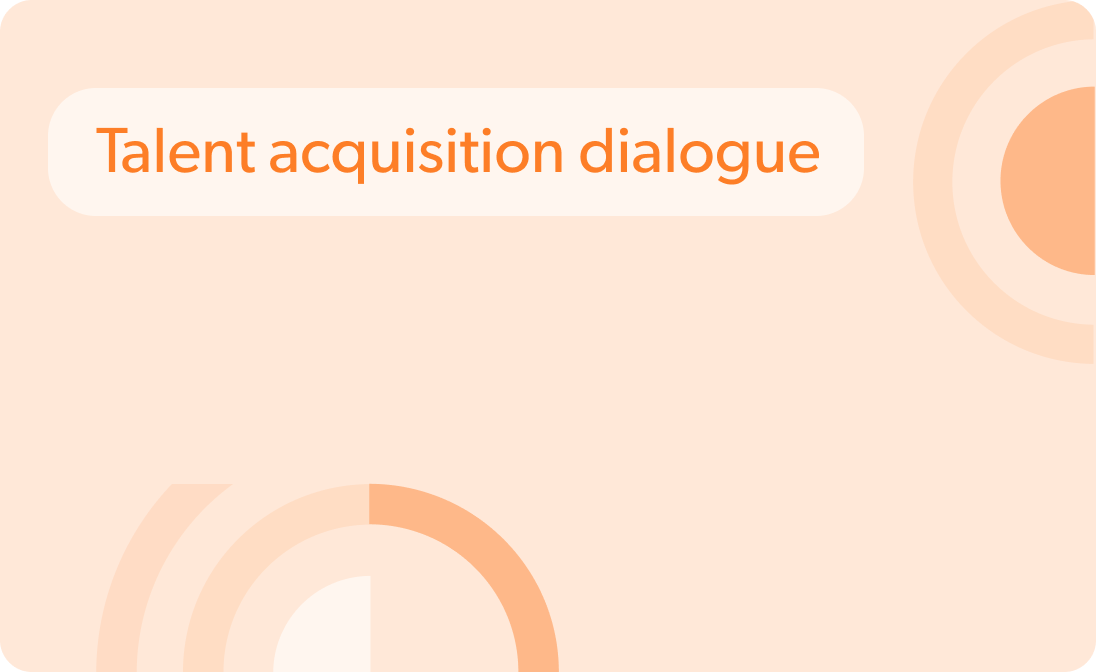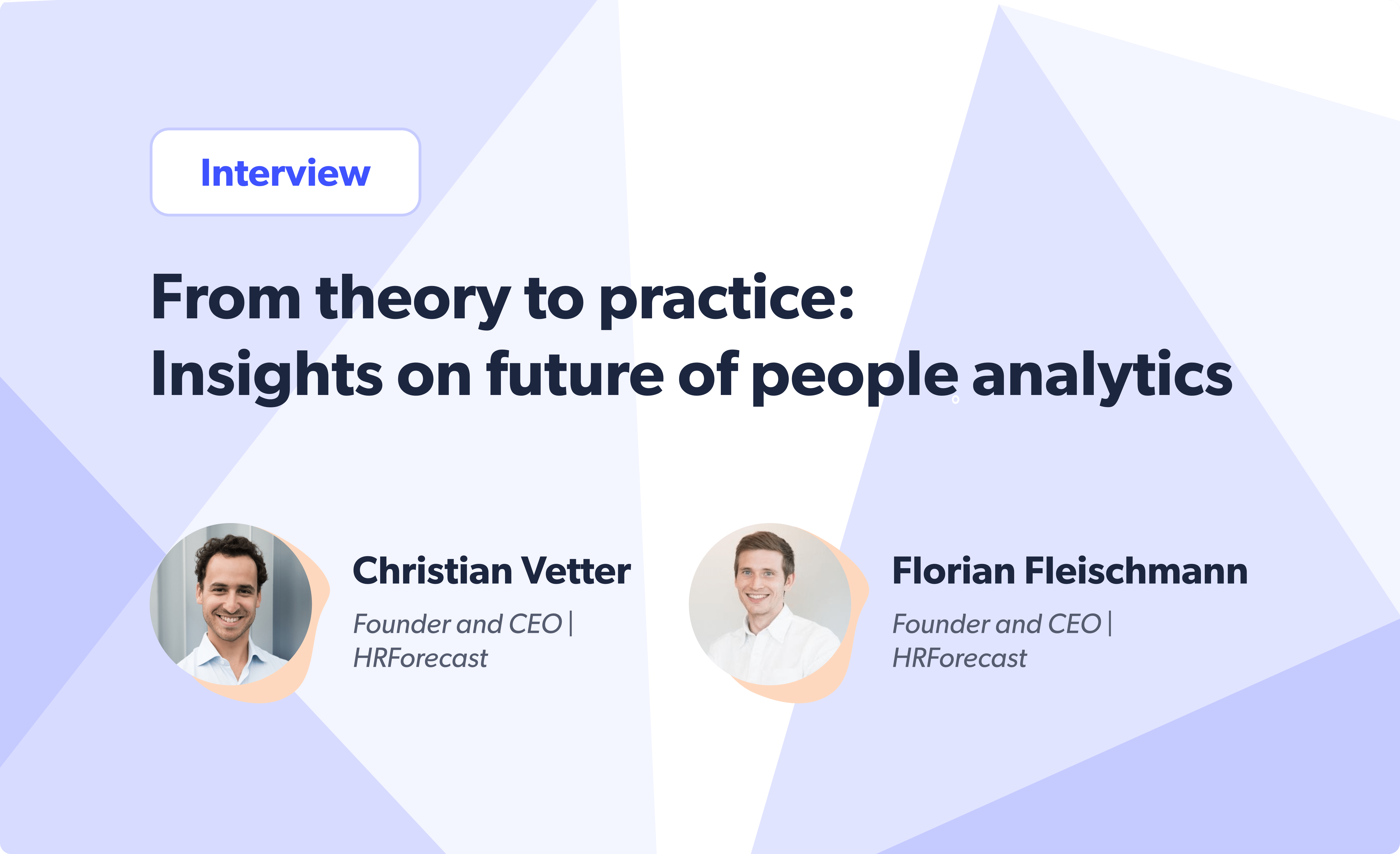Empathy meets innovation: The HRForecast journey to revolutionizing HR
Table of contents
- Q: Where should people analytics be positioned within an organization? What is its primary function?
- Q: About specific use cases such as talent management, talent acquisition, retention, and employee engagement, how can people analytics be advantageous for HR or business leaders?
- Q: What data sources are typically utilized in people analytics?
- Q: What are your views on the tools or technologies people analytics specialists employ?
- Q: What’s the role of people analytics in the future?
Meet Christian Vetter and Florian Fleischmann. Christian and Florian established HRForecast in 2014, but the concept had taken root much earlier when the duo collaborated as colleagues. The pivotal moment came when they learned about their firm’s impending layoff of 2,000 employees. Deeply moved by this development, they were inspired to envision a more resilient HR management tool that ensures no one is left behind in the corporate ecosystem.
Today, HRForecast is a testament to that vision, offering interconnected data solutions that empower business and HR leaders. By harnessing these insights, decision-makers don’t just achieve operational efficiency; they secure a unique, strategic competitive edge. The company’s innovative approach redefines the human resources landscape, proving that a blend of empathy and technology can revolutionize workforce management.
Q: Where should people analytics be positioned within an organization? What is its primary function?
Chrisitan Vetter
Despite its name, people analytics goes beyond traditional HR frameworks. It acts as a conduit between HR and the broader business operations.
Its primary role is not limited to harnessing HR data but extends to integrating this information with data from various other departments. This amalgamation of internal HR, comprehensive business, and external data enables the creation and facilitation of new use cases that perhaps couldn’t be addressed previously.
Furthermore, it’s crucial to distinguish people analytics from controlling. They are distinct entities; controlling tends to be more retrospective and immediate, focusing on generating accurate, audit-compliant figures.
People analytics, on the other hand, is exploratory. It’s geared towards prediction forecasting and maintains flexibility, delving into fresh use cases linked more to future business planning and strategic initiatives.
Florian Fleischmann
Well, in the end, people analytics should aim to solve business challenges.
Check in that sense with the optimal location for people analytics within an organization. It’s pivotal to position it within HR technology and strategy transformation sectors. This placement is essential for facilitating effective connections across various HR departments. Typically, situating it in HR controlling or HR IT leads to a detachment from core HR functionalities.
Recognizing its crucial role in driving organizational strategy, it’s imperative to approach people analytics not just on a case-by-case basis, but with a strategic mindset. Therefore, aligning it with HR technology and transformation sectors is advisable, moving away from generic, ready-made solutions and towards a more thoughtful, strategy-oriented approach.
Q: About specific use cases such as talent management, talent acquisition, retention, and employee engagement, how can people analytics be advantageous for HR or business leaders?
Chrisitan Vetter
The efficacy of people analytics hinges significantly on the specificity of the use case in question. Take recruitment, for instance. A prevalent use case, particularly relevant if we position ourselves as providers of people analytics, involves discerning the value of skills, the workforce, and the market value they command. For example, this concept mirrors how football players are priced, a phenomenon yet to be fully realized in corporate settings. However, it’s an invaluable insight for leaders and HR professionals aiming to gauge whether they augment value through recruitment, development, or other means.
We could evaluate the value of skills gained through talent acquisition against those gained through internal development and learning initiatives. It allows us to compare the skill value of our workforce over time and communicate the return on investment in recruitment and development to the business. This provides an understanding if investments in talent acquisition are more beneficial than in talent development.
This methodology not only ties talent acquisition with development but also extends to retention strategies. By analyzing the skill value of employees who leave for other opportunities, we can determine not just the crucial skills we are losing, but also the financial impact to the companies skill worth. It merely demonstrates how a novel KPI, generated via people analytics the ‘skill worth’ can be employed throughout the employee lifecycle.
Florian Fleischmann
Consider skill management; AI’s role within it, particularly in HR shared services, is transformative. The advent of generative AI has simplified tasks previously necessitating expert knowledge, thereby streamlining HR services.
Recruitment, too, has felt a significant impact, extending beyond mere algorithms to comprehensive data integration from various sources. This integration is pivotal in automating processes, including interviews. However, caution is essential here — we deal with systems influencing human lives. AI shouldn’t supplant human decision-making or give users the false impression of infallibility.
While remarkable, AI has flaws; it will never achieve perfection. It might excel beyond human capabilities, but it’s also prone to the biases and imperfections inherent in the human decision-making it learns from. Therefore, users should understand these flaws and interpret the AI’s suggestions with an informed, critical mindset.
Q: What data sources are typically utilized in people analytics? What are your thoughts on the data sources available to people analytics specialists today?
Chrisitan Vetter
In my extensive collaboration with leaders in people analytics, I’ve discerned that their resources can largely be categorized into two main types: internal and external data. The latter is particularly intriguing because it’s not something departments like controlling frequently utilize.
External data can encompass labor market insights, information on talent availability and cost, competitor movements, and industry trends.
Additionally, tracking the evolution of skill sets through continuous monitoring of job postings constitutes another form of external data.
As for internal data, people analytics often relies on similar datasets as other departments, such as payroll or other fundamental outputs from core systems. However, it diverges by integrating this information with financial data, business planning figures, and potentially even customer satisfaction metrics. The specific datasets employed are contingent on the particular case at hand. For instance, if the objective is to understand how employee engagement influences customer satisfaction, then integrating these types of data becomes essential.
Q: Could you provide an exemplary instance of effectively integrating external and internal data?
Christian Vetter
One of my preferred examples is strategic workforce or skills planning due to its incorporation of numerous unconventional data sources.
Here is a brief example:
Consider external data to gauge market trajectories and how these might influence your operations, whether in electric car production, cloud environments, or beyond. Interestingly, this phase doesn’t heavily involve HR data. The process initiates with identifying future skill requirements, which can be derived from external data points, such as competitor behavior, skills profile evolutions, and analysis of geographical hot spots.
Subsequently, the inquiry shifts to quantifying these skills. This phase delves into internal data, examining the current roles and skills of the workforce. One might integrate business drives like growth projections to predict future skill demands. This stage melds various business and HR data and can fuse external information, such as skills shifts or the planned profiles.
The final step involves identifying the skill gap. We can pinpoint the discrepancies by understanding future skill needs and current workforce capabilities. Addressing these gaps then circles back to quintessential HR strategies:
- Do we bridge these through internal or external recruitment?
- Can we develop these skills through training programs or reassignments?
- How much will it cost, and how long will it take to bridge the gap scenarios?
These are the critical considerations in this comprehensive approach.
Q: What are your views on the tools or technologies people analytics specialists employ?
Chrisitan Vetter
Diving into the subject of tools and technologies in people analytics, I’ve consulted various specialists about the instruments they deploy. Some rely on proprietary tools developed within their organizations, while others gravitate towards more universal solutions.
Florian Fleischmann
My stance is straightforward: steer clear of bespoke, in-house solutions.
The field has evolved significantly, and it’s prudent to prioritize standardized tools over custom-built ones. The landscape has changed drastically, especially with advancements in AI and related tools, making them more accessible and functional.
Companies’ initial instinct to develop their tools is often a costly, time-consuming venture that could be better served by utilizing existing technologies.
Understanding the ecosystem, recognizing the technologies at your disposal, and leveraging them are vital instead of attempting to reinvent the wheel.
Christian Vetter
A speaker at a conference I attended years ago differentiated companies into two categories: those learning people analytics and those scaling it. During the learning phase, the choice of tools is less critical because you generally deal with a handful of specialists exploring various use cases.
They might use the most flexible one, as scalability and repeatability aren’t yet pressing concerns. However, the mistake arises when companies assume these initial exploratory tools will suffice in the long term, leading them to invest in developing comprehensive in-house solutions. I concur with Florian; the market is abundant with sophisticated tools, especially for functions like skills management, that can effectively serve large-scale needs.
Florian Fleischmann
To emphasize, abandon the notion of isolated, custom solutions. These one-off projects, often initiated by tech or data enthusiasts, might offer short-term value but incur substantial initial costs.
Instead of focusing on individual problems, adopt a broad view — consider solutions that can be implemented on a large scale to address multiple challenges.
Currently, many companies engage what I’d term “pet data scientists.” These individuals might conduct sporadic analyses, but their contributions rarely translate into sustained long-term value. Instead, the focus should shift towards understanding how different technologies can integrate and interact, providing ongoing value for the business.
The essential professional in today’s landscape isn’t just a data scientist; it’s someone who understands technology, data, and practical business applications.
The goal should be to seamlessly integrate data and algorithms into everyday processes, providing consistent support to professionals like recruiters in making informed decisions. One-off analyses need to be more modern, with very few exceptions justifying the continued presence of a dedicated team of data scientists.
The focus should be on solutions that can be deployed broadly. Otherwise, you end up with transient insights that don’t contribute to long-term strategic value. The era of standalone data scientists is giving way to a need for technologically adept professionals who can bridge the gap between these advanced tools and tangible business outcomes. Past attempts at building in-house solutions typically flounder within a couple of years, due to a dearth of use cases, budget overruns, or failure to deliver the anticipated value.
Q: What’s the role of people analytics in the future?
Florian Fleischmann
The future of people analytics is stable, especially when it’s implemented on a large scale and precisely at the juncture where decisions are made, thus fostering value creation. That’s crucial.
However, many overlook the significance of data within people analytics. Instead, they focus on storytelling or prioritize individuals over data, which is an intriguing perspective but perhaps not comprehensive.
Ultimately, it’s not just about the people; it’s about the company’s needs and the problems you’re trying to solve. That’s the core focus, rather than just concentrating on individuals.
Christian Vetter
Neither approach is holistic or complete in isolation. The goal is to create value, and it’s unclear who specifically brings that to the table. However, what’s evident is the necessity for collaboration to ensure the underlying value is substantial.
Regarding the future stability of people analytics, it certainly seems set to endure, potentially evolving with advancements in AI. This evolution might expedite processes, for example.
Florian Fleischmann
I’d also add that the transformation isn’t merely a result of AI development. The crucial factor is that AI is now scalable and functional, serving as a solution. Generative AI, for example, has existed for a while, but its integration is key to solving real-world problems.
Having AI in recruiting is commendable, but if it doesn’t mesh with the system, it’s futile.
Christian Vetter
In conclusion, I concur with Florian. The future emphasizes the “people analytics factory,” the aspect of scalability, propelling it to the forefront. Conversely, the “laboratory” approach of exploration and individual-driven analytics is diminishing in relevance as proficiency in the field matures.
Stay up to date with our newsletter
Every month, we’ll send you a curated newsletter with our updates and the latest industry news.


























 info@hrforecast.de
info@hrforecast.de
 +49 89 215384810
+49 89 215384810






